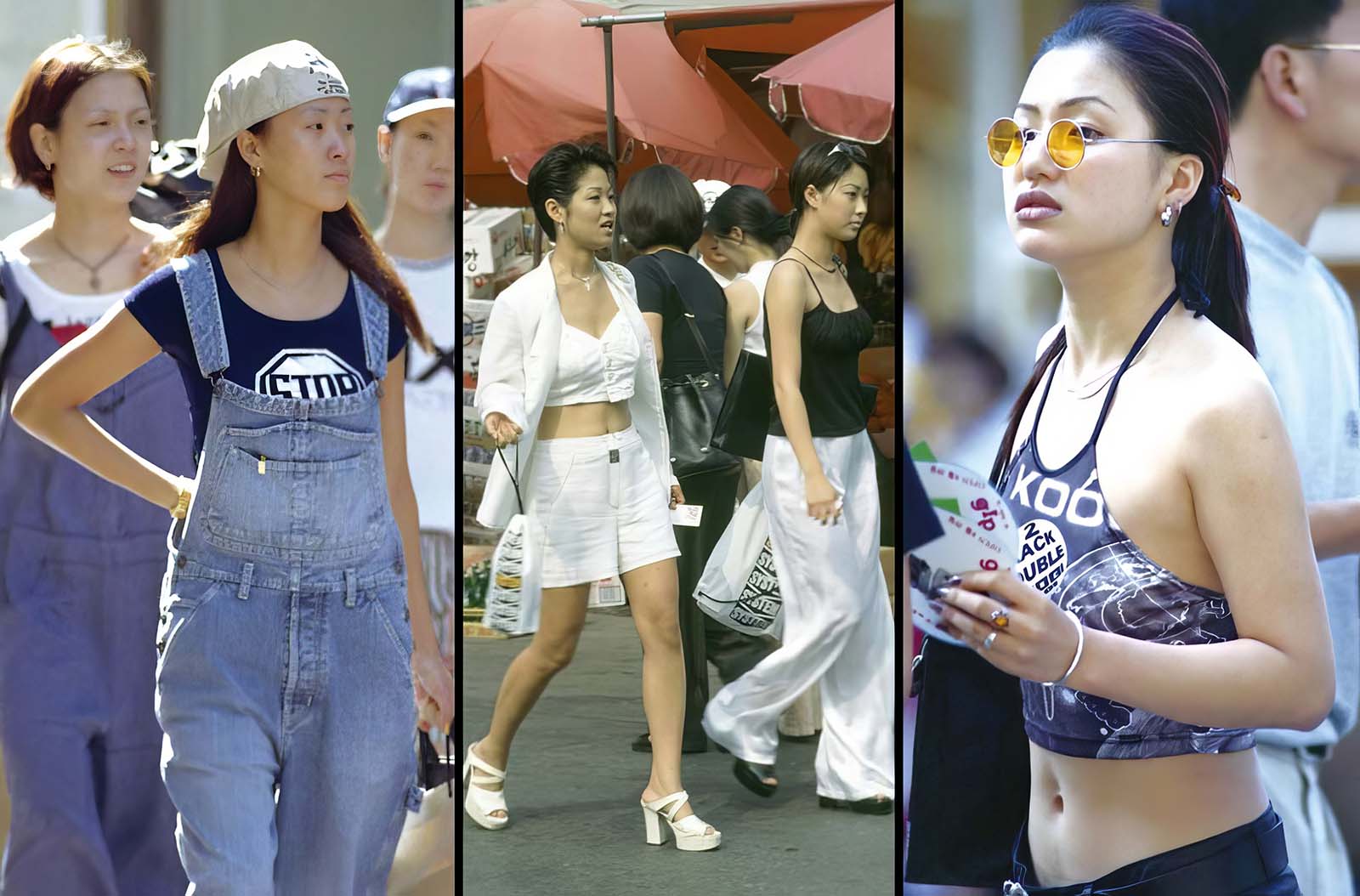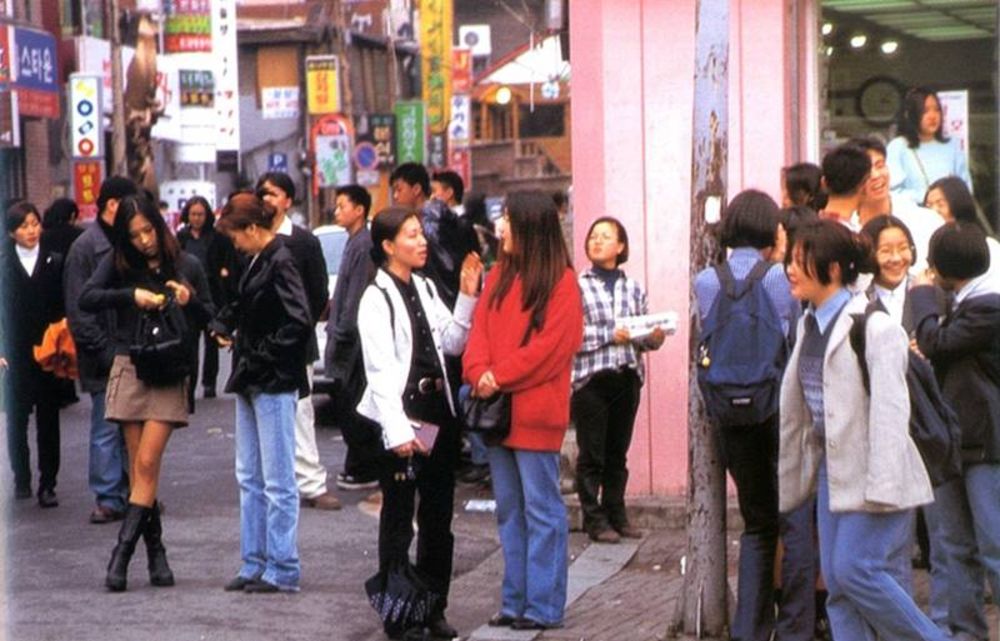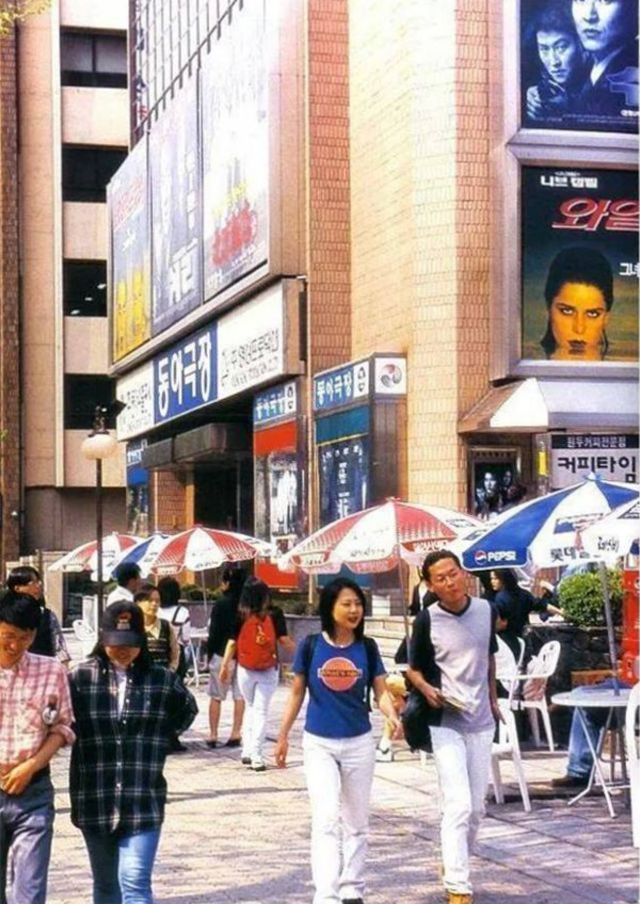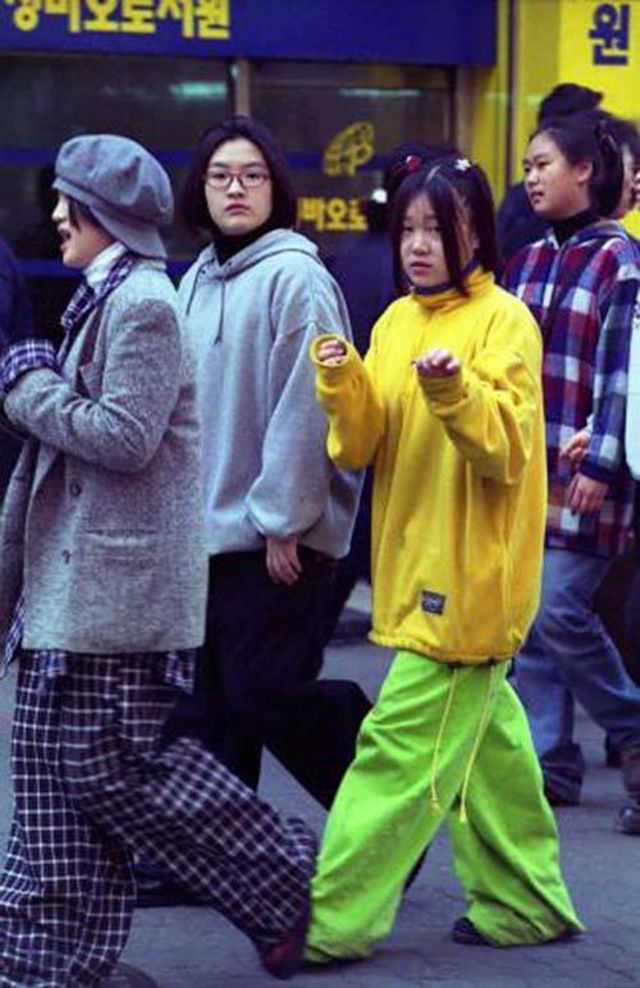 In the 1990s, South Korea’s streets began to pulse with a new kind of energy. Young people were discovering their own voices through fashion, experimenting with looks that reflected both local creativity and Western influence.
In the 1990s, South Korea’s streets began to pulse with a new kind of energy. Young people were discovering their own voices through fashion, experimenting with looks that reflected both local creativity and Western influence.
It was a time when K-Pop was just taking shape, and with it came a shift in how youth dressed and expressed themselves.
The group Seo Taiji and Boys led the way, blending hip-hop and rap with casual, oversized streetwear—baggy pants, baseball caps, and sneakers that carried the rhythm of a changing generation.
 Beyond hip-hop, other Western trends filtered into South Korea’s youth culture.
Beyond hip-hop, other Western trends filtered into South Korea’s youth culture.
Grunge fashion, with its layered flannels, ripped jeans, and effortless attitude, found a following among teens who wanted to look different from the mainstream.
This mix of influences—sometimes called “resistance fashion”—was more than a look. It was a quiet declaration of individuality in a society that had long valued conformity.
 Fashion, of course, didn’t evolve alone. The beauty industry followed suit, creating new products that complemented these fresh styles.
Fashion, of course, didn’t evolve alone. The beauty industry followed suit, creating new products that complemented these fresh styles.
BB creams, skin-brightening lotions, and lightweight foundations appeared on store shelves, offering a more natural alternative to heavy Western makeup.
Pastel tones, soft shades, and clean skin became part of the Korean aesthetic, setting the foundation for what would later be known worldwide as K-Beauty.
Even men began to experiment with makeup, adopting subtle touches that reflected a growing openness toward self-expression.
 Everyday life in 1990s Seoul was a mix of tradition and transformation. The city was rapidly modernizing, filled with construction cranes, neon lights, and the steady hum of new technology.
Everyday life in 1990s Seoul was a mix of tradition and transformation. The city was rapidly modernizing, filled with construction cranes, neon lights, and the steady hum of new technology.
After decades of rebuilding and economic growth, South Korea was stepping confidently into a new era. Yet beneath the surface of its rising skyline, daily life still carried a sense of modesty and community.
Street vendors sold tteokbokki and fish cakes on every corner, students in uniforms hurried to after-school academies, and families crowded around televisions to watch the latest dramas that reflected the hopes and struggles of the time.
 As these pictures show, for the younger generation, Seoul in the 1990s was both exciting and uncertain—a city caught between old traditions and a rush toward modernity.
As these pictures show, for the younger generation, Seoul in the 1990s was both exciting and uncertain—a city caught between old traditions and a rush toward modernity.
Western music and fashion were beginning to seep in through MTV broadcasts, cassette tapes, and glossy magazines passed between friends, offering a glimpse of a world that felt daring and different.
Teenagers were quick to embrace these new influences, experimenting with looks that mixed imported trends with local flair.
 Coffee shops became popular hangouts, places where young people could talk freely, listen to pop songs, or flip through the latest style magazines.
Coffee shops became popular hangouts, places where young people could talk freely, listen to pop songs, or flip through the latest style magazines.
Record stores buzzed with energy as fans searched for new albums, while the streets of Myeongdong and Dongdaemun filled with students trying on oversized jeans, graphic T-shirts, and colorful sneakers.

























(Photo credit: Pinterest / Flickr by RHP).